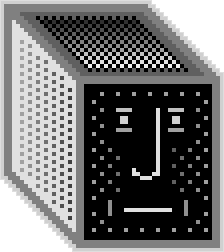Selected Work…
Acoustic Radiator
RadioRevolten International Radio Art Festival
Acoustic Radiator is a site-specific sound installation created for Radio Revolten International Radio Art Festival in Halle, Germany in September-October 2016. The building in which it is housed was abandoned for 15 years prior to the festival occupying it for - installation spaces, a radio station, offices and a performance space. The installation uses a high frequency RF receiver to receive the packets sent from a wifi router, and translates them into audible sound. These fast tapping packet rhythms are used as a clock, and sent to a modular synthesizer. The synthesizer subdivides the rhythms, and sends them to three modified speakers that vibrate a door, two radiators found in the building, and a subwoofer also buried under a pile of radiators. The lighting used in the installation was also found in a discarded pile in the building.
Das Große Rauschen: The Metamorphosis of Radio
KURATIERT VON ANNA FRIZ
Die Ausstellung zeigt internationale Radiokunst-Arbeiten, die mit den technologischen Grundlagen von Radio spielen, um es neu zu befragen: Welche Bedeutung kann Radio außerhalb seiner üblichen Funktion als informierendes und unterhaltendes Medium haben?

Ghost Station
Lower Bay Station, which has been out of use since 1968 (Toronto’s ghost station) is used as a vessel to contain sounds that are within and below the threshold of human hearing – infrasound and tactile sound – where sound is felt rather than heard. Low frequencies created by cars and subways are contributors to the cacophony of infrasonic noise that exists deep below the rumbling of the city. These tactile sounds have also been associated with paranormal activity and ghost sightings.
From Nuit Blanche, Toronto 2007
The Sleep of Reason Produces Monsters
Curator: Rhonda Corvese (Toronto, Canada)
Those who venture into Zone A will encounter a world turned upside-down, where the only certainty is to expect the unexpected. Nothing is as it seems. The works examine an urban civilization of alienation, fear and potential danger, mass communication and (dis)orientation. This tension is balanced by the alien and the fantastic, where humour is staged in strange situations and suspensions. Zone A promises to transfix and unsettle the psyche of the individual and the masses. Enter at your own risk. Go on, I dare you.
Rhonda Corvese is a Toronto-based independent curator whose projects often evolve in response to situations where she strives to challenge the role of the curator, artist and audience in the presentation and engagement of contemporary art.
Transduction
A collaboration with Dorion Berg
In this installation, a group of eight identical sculptures combine cannibalized pieces of outdated household electronics with drumskins & water. The sculptures act as bodies into which are fed electronic sound signals which they then transduce in different ways. There are three main points of transduction: One, sound signal being fed directly into old monochrome computer monitors, which produce different flashing patterns depending on sound intensity and frequency. Two, sound signal being fed into speakers at the apex of the sculptures, producing audible sound. Three, sound vibration traveling from the speakers along wire attached to a clear plastic drumskin filled with water, causing patterns of vibration on the surface of the water. The drumskins of water sit directly above the strobing monitor so that, when viewed from above, patterns on the monitor are modulated by patterns in the water. The rhythms, drumskins and water suggest some of our oldest fascinations with sound; while the gutted monitors, amplifiers and speakers-relics of the 70’s & 80’s-are re-fused into these strange new vibrating bodies.
Exposition - Centre des Arts Actuels Skol
13 octobre – 10 novembre, 2001
Description du projet
Comment convertir visuellement le son ? Comment le rendre matière ? Comment le faire lumière ?
Transduction est la seconde tentative du duo Berg et Roos pour répondre à ces questions de traduction. L’installation présente un ensemble de huit sculptures identiques qui combinent, chacune dans son réceptacle cylindrique, des morceaux trafiqués d’appareils électroniques domestiques désuets, des peaux de tambours et de l’eau. Nourrie de différents signaux sonores par une boîte à rythme, chaque structure les diffuse d’abord grâce à un haut-parleur placé à son sommet, ce qui nous permet d’entendre les sons, mais elle les fait également circuler physiquement, l’impulsion faisant vibrer le tambour et produisant toutes sortes de motifs à la surface du plan d’eau. Simultanément, le signal sonore initial est envoyé directement à un vieux moniteur d’ordinateur, ce qui produit, selon l’intensité et la fréquence du son, un large éventail de clignotements lumineux. Superposés les uns aux autres, les transducteurs que sont le moniteur, le tambour baigné d’eau et le haut-parleur renforcent et parasitent à la fois leur travail de traduction respectif, produisant des effets visuels surprenants et nous plongeant dans une sorte de concert électro-acoustique alliant rythmes primitifs et technologies en décomposition dans lequel chacun des effets sonores et lumineux se trouve produit par d’étranges corps vibrants nous entourant.





